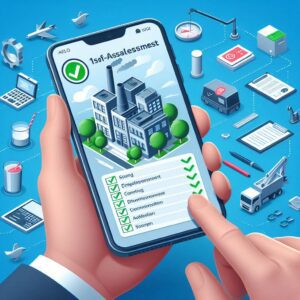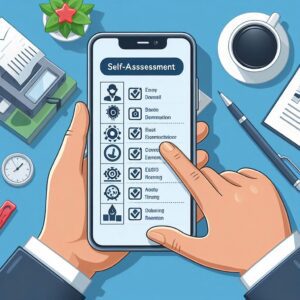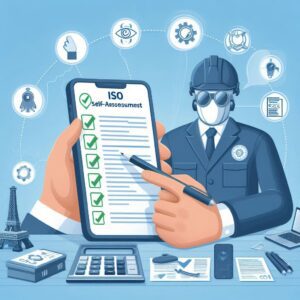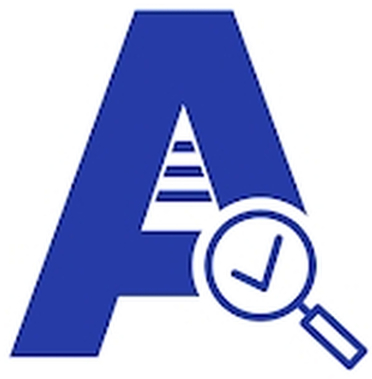ISO 14001 Self-Assessment Checklist
With ISO 14001 Self-Assessment Checklist audit using eAuditor Audits & Inspections can help organizations efficiently assess their compliance with the ISO 14001 Environmental Management System (EMS) standard. This self-assessment aids in identifying gaps, ensuring continuous improvement, and preparing for external audits.

Here’s a step-by-step guide on how to create and execute an ISO 14001 self-assessment checklist using eAuditor Audits & Inspections:
1. Understanding ISO 14001 Self-Assessment
Purpose of the Self-Assessment
- Evaluate EMS Effectiveness: Ensure the environmental management system (EMS) complies with ISO 14001 standards.
- Identify Gaps: Spot non-conformities and areas that need improvement.
- Enhance Performance: Focus on improving environmental performance and sustainability efforts.
- Prepare for Certification: Self-assessment helps in getting ready for third-party certification audits.
Key Elements of ISO 14001:
- Context of the Organization
- Leadership and Commitment
- Planning (Risk/Opportunity, Environmental Aspects)
- Support and Resources
- Operations (Environmental Controls, Emergency Preparedness)
- Performance Evaluation and Monitoring
- Continuous Improvement
2. Setting Up eAuditor Audits & Inspections for ISO 14001 Self-Assessment
Step 1: Define Audit Objectives
- Scope: Determine whether you are assessing a specific department, the entire organization, or a specific environmental aspect (e.g., waste management, energy use).
- Audit Focus: Decide if you are focusing on documentation, operational controls, compliance with legal requirements, or other areas of your EMS.
Step 2: Create or Customize the Checklist
- Start with Templates: eAuditor Audits & Inspections provides pre-built ISO 14001 Self-Assessment Checklist templates for audits, which can be modified based on your organization’s specific needs.
- Customize: Tailor ISO 14001 Self-Assessment Checklist to address specific risks, opportunities, environmental impacts, and legal obligations your organization faces.
3. Example of ISO 14001 Self-Assessment Checklist
Here’s a sample ISO 14001 checklist structure you can use or customize in eAuditor Audits & Inspections:
Section 1: Context of the Organization
- Have external and internal issues that are relevant to the EMS been identified? (Yes/No)
- Are stakeholders and their expectations considered in the EMS?
- Are the scope and boundaries of the EMS clearly defined?
Section 2: Leadership
- Has top management demonstrated leadership and commitment to the EMS?
- Are environmental policies aligned with the strategic direction of the organization?
- Are responsibilities for the EMS clearly defined and communicated?
Section 3: Planning
- Risks and Opportunities
- Are risks and opportunities related to environmental aspects identified?
- Are controls in place to address these risks?
- Environmental Aspects
- Have significant environmental aspects been identified (e.g., energy use, emissions)?
- Are environmental objectives and targets set to improve performance?
- Compliance Obligations
- Is there a procedure for identifying legal and regulatory requirements?
- Are compliance obligations reviewed and updated regularly?
Section 4: Support
- Are sufficient resources allocated to implement and maintain the EMS?
- Are employees aware of their roles in the EMS?
- Is training and competence program in place for employees and contractors?
Section 5: Operations
- Operational Controls
- Are operational controls in place for significant environmental aspects (e.g., waste management, resource use)?
- Are procedures and work instructions documented and followed?
- Emergency Preparedness and Response
- Is there a documented procedure for emergency situations (e.g., spills, accidents)?
- Are emergency drills conducted, and are response measures reviewed?
Section 6: Performance Evaluation
- Are monitoring and measurement activities defined for significant environmental aspects?
- Is internal audit conducted regularly to evaluate the effectiveness of the EMS?
- Are non-conformities identified and addressed?
Section 7: Improvement
- Are opportunities for continual improvement identified and acted upon?
- Are corrective actions taken to address non-conformities and prevent recurrence?
- Is the effectiveness of corrective actions evaluated?
4. Conducting the audit with ISO 14001 Self-Assessment Checklist in eAuditor Audits & Inspections


Step 1: Schedule the Assessment
- Assign Auditors: Designate responsible persons for different sections of the audit.
- Set Frequency: Determine how often you’ll conduct self-assessments (e.g., quarterly, annually).
Step 2: Perform the Audit
- Use Mobile Devices: Conduct the self-assessment using eAuditor Audits & Inspections on-site to capture real-time data.
- Record Findings: Document non-conformities, areas of improvement, and best practices. Attach photos and comments for more detailed observations.
- Rate Compliance: For each checklist item, rate your compliance (e.g., compliant, partially compliant, non-compliant).
Step 3: Generate and Share Reports
- Automatic Reports: eAuditor Audits & Inspections allows you to generate reports instantly after completing the assessment.
- Customized Report Layouts: Modify the report format to suit internal or external stakeholders, including key findings, photos, and action items.
Step 4: Implement Corrective Actions
- Assign Action Items: Use eAuditor Audits & Inspections to assign corrective actions to relevant team members and set deadlines.
- Track Progress: Follow up on the implementation of corrective actions using iAuditor’s task management features.
5. Best Practices for Effective ISO 14001 Auditing with eAuditor Audits & Inspections
Engage Key Stakeholders
- Involve top management in the audit process to ensure leadership commitment.
- Communicate the purpose and findings of the audit with all relevant departments to ensure organization-wide participation.
Ensure Accuracy and Consistency
- Use standard terminology and rating scales across all audits to maintain consistency.
- Regularly update your checklist to reflect any changes in regulations, processes, or environmental aspects.
Leverage eAuditor Audits & Inspections’s Automation Features
- Notifications: Set automated notifications to remind team members of upcoming audits or pending corrective actions.
- Integration: Link eAuditor Audits & Inspections with other management systems (e.g., environmental databases, legal registers) to streamline data collection and reporting.
Monitor and Improve
- Use eAuditor Audits & Inspections’s analytics dashboard to track trends and performance over time. Identify recurring non-conformities and areas that need continuous improvement.
- Update the EMS and your checklist regularly based on audit findings and organizational changes.
6. Sample ISO 14001 Self-Assessment Checklist Sections and Key Questions
Here’s a more detailed look at key questions for each section of the checklist that you can customize in eAuditor Audits & Inspections:
Context of the Organization
- Have you defined how external and internal issues impact the EMS?
- Are stakeholder expectations documented and reviewed regularly?
- Is the scope of the EMS clearly aligned with the organization’s objectives?
Leadership
- Has top management signed off on the environmental policy?
- How is leadership demonstrating commitment to the EMS?
- Are roles, responsibilities, and authorities communicated across the organization?
Environmental Aspect and Impact
- Have you identified environmental aspects and impacts of all activities, products, and services?
- How do you determine significant environmental aspects?
- Are control measures implemented for all significant environmental aspects?
Compliance Obligations
- Are all legal and regulatory requirements identified, documented, and up to date?
- How do you ensure ongoing compliance with applicable laws and regulations?
- Do you have a system in place to evaluate compliance with legal requirements?
Performance Monitoring and Evaluation
- Are monitoring systems in place for key environmental aspects?
- Are internal audits conducted regularly to assess the EMS?
- How do you handle non-conformities and what are the corrective actions taken?
7. Resources and Further Guidance for ISO 14001 Self-Assessment Checklist
- eAuditor Audits & Inspections by eAuditor Audits & Inspections: Official Website
- ISO 14001 Standard: ISO Official Site
Conclusion


Utilizing eAuditor Audits & Inspections for your ISO 14001 Self-Assessment offers a structured, efficient, and highly adaptable way to manage your environmental responsibilities. With customizable checklists, real-time reporting, and collaborative features, eAuditor Audits & Inspections helps ensure compliance with ISO 14001, drives continuous improvement, and streamlines the certification process.
By conducting regular self-assessments and leveraging eAuditor Audits & Inspections’s powerful features, you can improve your environmental performance, reduce risks, and stay aligned with global environmental standards. If you need further assistance setting up your ISO 14001 audit in eAuditor Audits & Inspections, feel free to ask!
